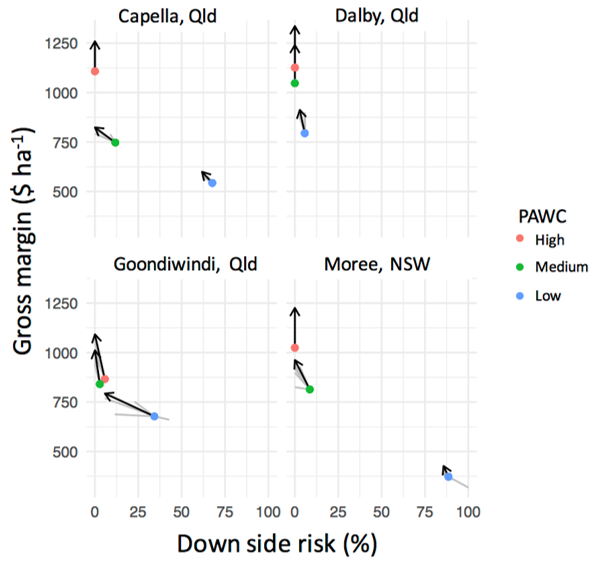Predicting optimum crop designs using crop models and seasonal climate forecasts
Expected increases in food demand and the need to limit the incorporation of new lands into agriculture to curtail emissions, highlight the urgency to bridge productivity gaps, increase farmers profits and manage risks in dryland cropping. A way to bridge those gaps is to identify optimum combination of genetics (G), and agronomic managements (M) i.e. crop designs (GxM), for the prevailing and expected growing environment (E). Our understanding of crop stress physiology indicates that in hindsight, those optimum crop designs should be known, while the main problem is to predict relevant attributes of the E, at the time of sowing, so that optimum GxM combinations could be informed to farmers. In a recent article published in Nature’s Scientific Reports by UQ-QAAFI’s Farming Systems Research Group, A/Prof Daniel Rodriguez tested our capacity to inform that “hindsight”. The work involved linking the APSIM-sorghum model with a skilful seasonal climate forecasting system, to answer “What is the value of the skill in seasonal climate forecasting, to inform crop designs?”
The article is open access and can be downloaded from http://rdcu.be/F7Yp.

